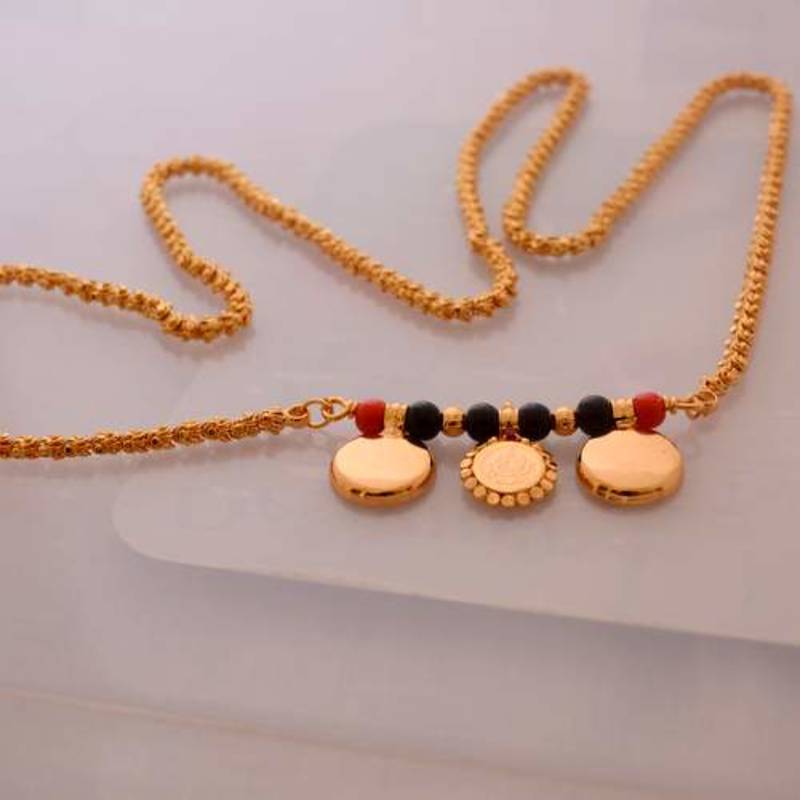What Every Bride Should Know About Managalsuthra

Hindu culture and traditions place a high value on the mangalsutra. In contrast to Indian bridal jewellery, a mangalsutra denotes a woman's marital status rather than being "simply" an adornment. Hindu married women in India wear it as a lucky thread of friendship and love. In Hindu culture, the Mangalsutra, which the groom ties around the bride's neck on the wedding day, is regarded as a token of affection, much like the wedding bands that are exchanged. To learn more, keep reading.
The Significance:

According to Hindu tradition, a woman must wear the Mangalsutra, toe rings, Kumkum, bangles, and a nose ring as indications of her marital status. The mangalsutra is regarded as being the most significant. The name "Sacred thread" comes from the Sanskrit words "mangal" for sacred and "sutra" for thread.
It is thought that the idea of wearing a mangalsutra first appeared in South India, where it is known as a thali or mangalyam. It was traditionally a yellow thread covered with turmeric paste and put around the bride's neck in three knots. It has evolved with the times, though, and is now worn as a necklace with black and golden beads strung along the thread.
According to Hindu tradition, a lady wearing a mangalsutra must keep it until her husband's passing. Also, it is viewed as a negative omen if the mangalsutra breaks for whatever reason.
What is “Mangalsutra “ symbolised?

A mangalsutra may appear to be jewellery. It does, however, have a unique place. The husband has pledged to his wife that they will be together forever. Additionally, the mangalsutra shields the husband and wife from all the evil in the world and represents the union of two souls (husband and wife). A Hindu bride (wife) wears a mangalsutra to protect her and her husband's marriage.
Regional Variations:
Although the idea for the Mangalsutra was developed in South India, it spread to other regions of the country and has since changed. As a result, the Mangalsutra evolved into various versions with various patterns and styles.
For instance, in the Sikh community, the groom is given a black stitched Mangalsutra and gold coins by the bride's father as well as a gold bangle.
The only component of a mangalsutra in the Bihari segment of Indian society is a black beaded chain with a central gold pendant
Instead of tying a turmeric thread with the Thali, Tamil Nadu uses a full gold chain.Along with the Thali pendant, valuable stones like coral and pearl are used in Telugu culture.
A Style Statement:

Mangalsutra is no longer just a required or conventional decoration; it has evolved into more of a fashion statement. Women now dress in high-end styles made of various metals, platinum, and alloys. Even pendants made of pure gold and diamonds are fashionable.
Women are motivated by television soap operas to alter their perceptions of the Mangalsutra. As a result, lots of women help create sleeker designs that go well with their attire.
Health Benefits:
The significance of the mangalsutra goes far beyond tradition because it also has many positive health effects. That's accurate. Mangalsutra's significance for science cannot be disregarded.
A mangalsutra should have a chain that is at least 24 to 30 inches long. This is so that the Mangalsutra can touch the bride's Anahat Chakra, also known as the Heart Chakra, which is positioned in the middle of the spine, close to the heart.
According to Indian research, pure gold offers many therapeutic benefits, the most significant of which is a healthy heart. According to Ayurveda, wearing a mangalsutra near your heart—close enough to touch your skin—attracts cosmic waves that promote healthy heart function. Additionally, it is asserted that these waves support the maintenance of a happy, healthy marriage.
The advantages of mangalsutra for health include:
Increasing the body's defences
Maintains regular blood flow and your vitality
Balances the levels of blood pressure
Activates the woman's body's inherent vitality by stimulating the Surya nadi, also known as the sun channel.
In addition to their health advantages, black beads the size of mustard are believed to fight off evil and safeguard the integrity of marriage.
How many black beads should be worn in Mangalsutra:
Nine black beads and nine gold beads are strung together to create a classic mangalsutra. The two strands of a Mangalsutra include seven of the nine black heads. A central link is created by a square arrangement of four gold beads with a circular shape. This aids in defending the woman against ongoing bad energy assaults.
The Mangalsutra's nine black beads stand up for Adishakti's nine forms. Adishakti is the name for the Primal Energy that shields a woman from malicious gaze. The gold beads hold the force of Air and Fire elements that ward off negative energies, while the black beads contain the strength of Water and Earth elements.
Different Mangalsutra Designs:

The Mangalsutra design has been modified to reflect various Hindu cultural traditions. A lot of contemporary designs are also available.
Many women are being forced to give up their mangalsutras and other jewellery in order to comply with the demands of the workplace for specified clothes and ensembles. Despite these restrictions, modern Indian women still find ways to wear the mangalsutra by choosing sleeker versions that keep the mangalsutra's meaning while staying true to their cultural history.


